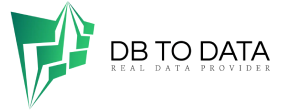In today’s uncertain economy, it can be difficult for video marketers—those who use video marketing to grow their business, promote their brand, and reach a wider audience—to stay calm and look ahead.
For most of them, measuring the effectiveness of their media investments is a top priority. And while a focus on measurement can help these specialists drive growth in both the short and long term, not all measurement approaches are identical. Success depends on having the right media strategies and tools in place.
It can be tempting
To focus only on immediate results during tough times. But office 365 database marketers will combine their short- and long-term business goals and take a more holistic, full-funnel approach to YouTube . In fact, recent research from Nielsen indicates that brands that added top-of-funnel marketing efforts to already existing campaigns targeting the middle stage of the funnel were able to increase return on investment (ROI) by 70%. And brands that added top-of-funnel tactics to campaigns covering both the middle and bottom phases of the funnel managed to increase ROI by 13%.
Demonstrating the value of a video strategy
Across the full funnel requires using measurement
develop a success mindset tools and tactics that leverage the interplay between top-level brand objectives and bottom-level performance objectives.
To do this successfully, marketers can use an effective 3-part framework that balances new, proven methods with emerging measurement practices.
Two parts of the framework
attribution and incrementality – help you achieve short-term business results, while the third part – marketing mix modeling – helps you make smarter decisions in the long term.
These days, using an attribution model that assigns credit for
cyprus business directory conversions to different ads that occur throughout the customer journey should be standard practice. When done properly, attribution allows marketers to easily optimize their advertising strategies. Google’s data-driven attribution model helps you analyze your consumers’ journey across Search, YouTube, and Display to discover which touchpoints are most effective.
While attribution is useful for quickly uncovering and optimizing opportunities, it’s important not to treat it as a standalone measurement solution. Relying solely on attribution insights to optimize your plans may provide you with rapid growth, but you run the risk of not investing in the top-of-funnel brand strategies that constantly replenish customer demand.
Additionally, as measurement becomes more challenging in a privacy-first world, it will be critical to have multiple sources of information rather than relying solely on attribution. To take attribution to the next level, combine it with incrementality.
Include incrementality to assess full-funnel impact
A powerful way to complement attribution and take your measurement mix to the next level is to include incrementality . Typically defined as an improvement or increase in a particular desired outcome, incrementality helps you understand the KPI optimization that occurs as a result of your ad. As a result, incrementality can help you better understand the impact of full-funnel campaigns and pave the way for long-term growth.

